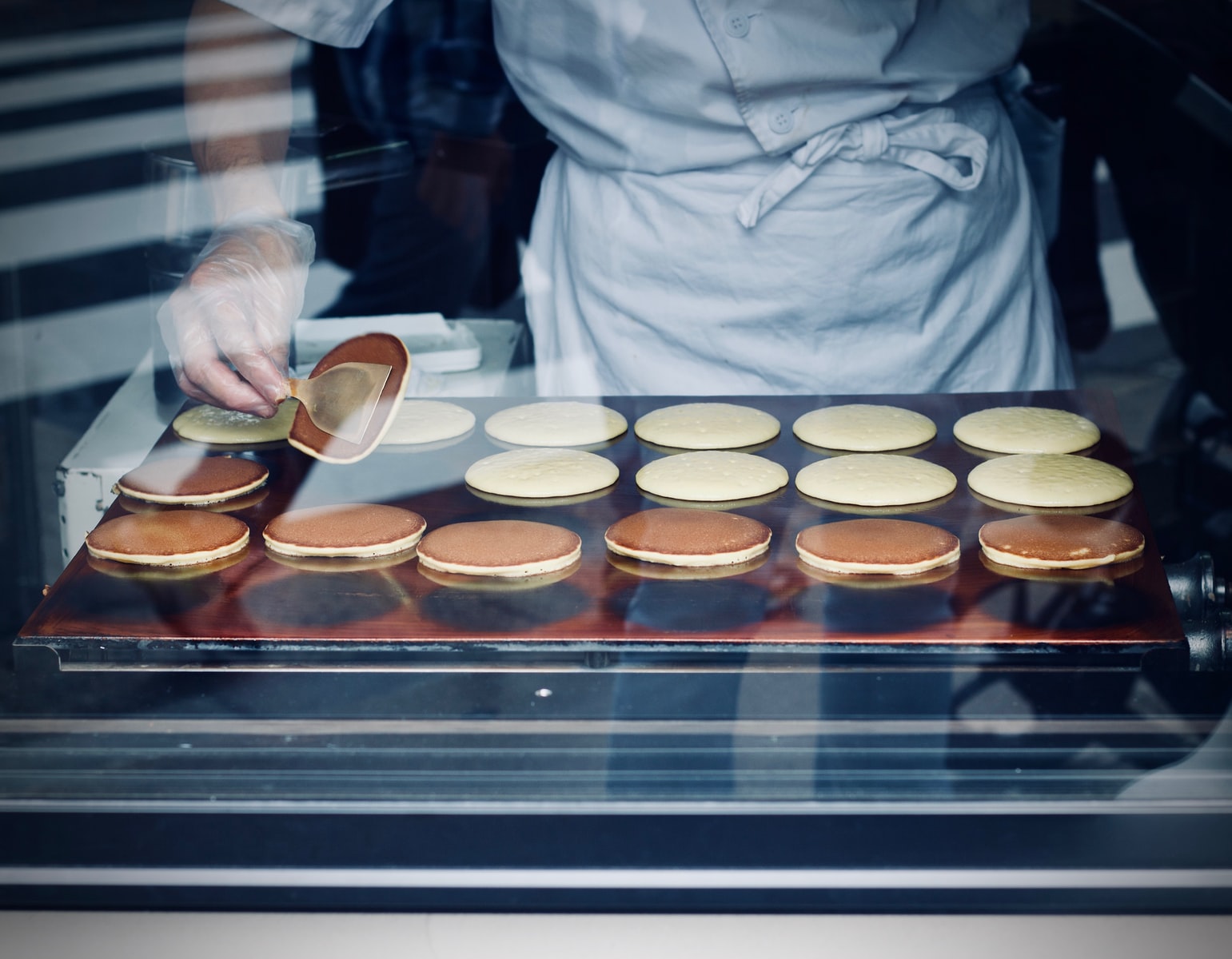Mindful Eating: a Microcosm of How We Conduct Our Lives

In Japan, there is an increasing number of people practicing mindful eating — a meditative way of enjoying our food. Traditionally, expressing gratitude before eating is something that is embedded in Japanese culture as part of the daily ritual. Mindful Eating: A Guide to Re-establishing a Healthy and Joyful Relationship with Food by Jan Chozen Bays was published in 2009 and is regarded as the pioneering book, which introduced the concept of mindful eating to the readers in the U.S. Mindful eating is not just about eating, but is about being present with the food in front of you, concentrating on that moment, and reflecting on your inner self.
According to the book, there are nine hungers including visual hunger, ear hunger, mind hunger, and mindless hunger. One of them, touch hunger stimulates mouthfeel, which is about the texture of food such as creaminess and crispness. Nowadays, mouthfeel has become one of the most important criteria to evaluate wine and food in the U.S. Bays pointed out in the book that the Japanese have 400 words to describe the texture of food, while the Americans only have about 75 words.
Dr. Sharon A. Suh is a Buddhist academic, who came across the teaching of mindful eating and became a mindfulness coach. She said mindful eating is about enjoying our lives, not by consuming material, but by coming back to ourselves. What is the core teaching of mindful eating and how can we apply it in our daily lives to make a difference?
There are all these visible and invisible causes and conditions that have shaped our relationship to food.
— I learned that you stumbled upon a book about mindful eating at a bookstore about ten years ago, which led you to become a trained mindful eating practitioner. What is it about this practice that appealed to you in a profound way and how did it change your life?
Sharon A. Suh: I came across the book Mindful Eating: A Guide to Re-establishing a Healthy and Joyful Relationship with Food in the bookstore. What appealed to me so much about it was that I learned that mindful eating was about recreating and reestablishing a joyful relationship to food. For women in particular, but increasingly so for men, food is such a charged topic. We’re taught to eat everything people give us and at the same time, we have a lot of cultural pressure to maintain a certain look or a certain body weight. There’s all this pressure on what we eat, and we don’t get to decide for ourselves what we want to eat. When I found this book, I was so fascinated because it was saying that there’s a way to relearn how to eat in a way that is personally fulfilling and enjoyable, and that if we slowed down while we were eating, we would also be able to appreciate all the food that we have.
I grew up in New York, in the 1970s, in an immigrant household. My parents are Korean immigrants, and my mother was very strict about food. As I was growing up, I never knew if I was hungry or full, because my mother would always make those choices for me. And, when you are growing up as a young woman in an American culture, it is also hard because there’s a huge diet industry of about $72 billion a year, which tries to create a sense of authority over what you should or shouldn’t eat. Mindful eating was such a refreshing discovery because it was the exact opposite of that. Instead of listening to what somebody else is telling you what you should eat, you get to check in for yourself, and then bring all of your awareness and senses to your meal. I appreciated that because it was a message that I hadn’t heard before. It fundamentally changed my relationship to food and eating and ultimately my body.
— I heard that mindful eating has its roots in the 2,600-year-old Buddhist practice of mindfulness. Is it difficult to adopt mindfulness for people with different backgrounds?
Suh: Mindfulness is so popular in American culture, but I think people misunderstand it. People have an assumption that mindfulness is about not thinking about anything or it gets associated with a kind of identity in the wellness industry. If you’re mindful somehow, you’re more spiritual than other people. Mindfulness has been taken out of the Buddhist tradition, and marketed as a lifestyle. That’s why when people come across mindful eating, they think that it’s part of the wellness or diet industry. If you’re a mindful eater, they assume it’s a new diet. When I teach mindful eating, I always have to tell people that it has nothing to do with diet, exercise, or food. All food is medicine with the right dose. In American culture, there’s such an emphasis on good and bad food. From a mindful eating perspective, that’s totally false. What’s more important is our relationship to the food.
The most helpful thing to learn from a Buddhist perspective is to understand the ways in which we’re conditioned. The Buddha taught us about our past conditioning; how we were raised and the conditions from our past. They continue to shape how we understand the world today. It’s important to notice the ways that we eat today are impacted and shaped by how we were raised as a child. For example, all the conditioning by my parents and their parents, and all the related trauma, also impacted my relationship to food. I know there are many generations, which grew up around food scarcity. My parents were affected by that during the Korean War. Afterwards, that trauma shaped how they understood food. There was so much pressure to eat everything on your plate in my family. And if you don’t, it’s a sign of disrespect, or it triggers the subconscious fear that’s inside them. Understanding the source of the problem is the most important thing. There are all these visible and invisible causes and conditions that have shaped our relationship to food. There’s something missing in American culture and popular cultures in the understanding of mindful eating. They may think that it’s about having to eat slowly. That’s mindful eating, but that’s a very limited understanding.
–Why do you think so many people are connected to mindful eating?
Suh: Everyone seems to have some difficult relationship to food. At the same time, two-thirds of American adults are suffering from disease including metabolic disease, and increasingly so among children. Mindful eating is appealing because people are beginning to realize that when you step away from judgment around food including what is good and bad for you, you learn how to trust your own intuitive wisdom about how you’re going to feed yourself.
When we were young, our parents decided when we’re hungry or not. Children have an intuitive understanding of when they’re hungry, and when they’re full. It’s parents and caretakers that undermine that inner authority. As a parent, when my children were young, I used to tell them they needed to finish their vegetables or eat something because they were going to be hungry later. They would say that they weren’t hungry. Then you force them to eat and they stop trusting their internal wisdom about whether or not they should eat. Mindful eating is a way of saying, “I’m going to learn how to trust my gut or my internal instincts and ask myself rather than listen to an external authority, like a diet plan, or social media, about eating.”
In my class, I always ask my clients, “What are we allowed to eat now?” One year, eggs are fine. The next year, no longer. The diet industry is huge in the U.S. and the rules are always changing. No wonder why we suffer so much around what we’re supposed to eat. If we can step away from that, that makes us powerful. We can ask ourselves what we feel like eating as opposed to what we should eat. Our bodies know. If it’s a very hot day outside, and we’ve been outdoors and sweating, chances are our bodies are going to crave something salty, and our cells and bodies know what we need. But we tend to override our internal wisdom and look outside of ourselves. Once you start listening to all the external authority, you don’t give what your body is craving. Then, you end up having food restriction, which leads to binge eating or overeating. As soon as you put something on the “don’t eat list”, all you can do is think about that one thing that you can’t eat anymore. When you finally get it, you act like you’re going to eat it all now because you’re never going to be able to have it again. That kind of struggle is ongoing. Mindful eating allows you to put a pause there and turning inwards for your decisions. Most of the time we tend to eat on autopilot. We eat quickly when we’re consuming food, while consuming the TV, the radio, or the phone, and we’re never with our meal.
Mindful eating gives us an opportunity to sit down, take a breath and appreciate our food. It’s a simple practice, which has profound results. It’s not about your diet or body. It’s about satisfaction, and being emotionally satisfied and calm and being able to generate happiness.

Check in with your stomach. Sometimes we mistake other things for hunger.
— There is a difference between fullness (a volume measurement) and satisfaction (an emotional measurement). How could I eat in a sensible way?
Suh: We’re conditioned to eat at a certain time every day. First of all, eat when you’re hungry. There’s no virtue in not eating when you’re hungry. A lot of people struggle with food thinking it’s a good thing if you don’t eat even when you are hungry. That’s not a good thing. Check in with your stomach. Sometimes we mistake other things for hunger. If you’re thirsty, you might feel the same symptoms as physical hunger. If you’re anxious, or struggling with anxiety, you might have an empty feeling in your stomach. You might feel a little bit jittery, but you might not actually be hungry. When you eat although you are not hungry, the food doesn’t satisfy the hunger. When this happens, you have eaten all this food and start to feel guilty and bad. That’s samsara, a cycle of constant suffering and struggle. Feeling guilty and bad about yourself leads to a cycle of anxiety and binge eating. One of the things that we can do before we sit down to a meal is check in with ourselves.
Jan Chozen Bays introduced me to one of the simplest practices. When you get your food, check in quickly with your stomach and ask how full you are. Are you a quarter, half, three quarters or really full? And then you ask yourself: how much would you be satisfied with? One or two cups? Make a decision and take the amount you want for yourself. When you sit down, bring all of your senses to your meal. Look at your food. Look at the color or the arrangement and smell your food. The more you bring your senses to your meal, the more you’re in the present, as opposed to worrying about what you should have done at work and worrying about what you need to do to get a promotion. That’s about the past and the future. As soon as you start bringing your senses, your eyes, your nose, and sound, as some foods make crunchy sounds, bring your awareness to the texture of your food, and see how it feels in your stomach. You are creating a moment of awareness and presence. And once you finish, halfway through your meal, you check in again. How much more would I like to eat? And it’s not that you restrict yourself but you give yourself permission to eat as much as you want. Then, you slow down because it takes about 20, 25 minutes to digest and begin to feel the hunger —the fullness cue in your body. Most of us eat meals in about five or ten minutes.
–What sort of feedback have you received from your clients in your mindful eating workshops and training?
Suh: A lot of people say they’re relieved especially in the beginning of the class. The first thing I always say is mindful eating is neither a diet nor an exercise plan. I tell my clients that I don’t know if they’re going to lose weight. I tell them that they will lose their guilt around food. What people appreciate is not having to feel guilty for eating a piece of cake.
From what I see in American culture, if we eat a food that we think we’re not supposed to eat, we eat it standing up and don’t put it on a plate. It’s almost as if we don’t want to admit that we have a desire for food. The feedback that I’ve gotten from my clients is that they’ve learned to normalize food, and that it’s fine to desire things like sugar. When our brains need sugar, it’s fine to eat chocolate. The point is to eat it in a way that you taste it and appreciate it. People have learned how to let go of some of the guilt around food. This is about giving permission to enjoy their food.
— In mindful eating, food is considered medicine. If so, how do we know what kind of food to eat? What is the right dose to consume food?
Suh: I always tell people, I’m not a doctor. My concern is people’s joyfulness around food. It allows people to slow down and eat whatever they want and learn how to trust themselves around food. Some people would say they can’t have sweets in the house because they won’t stop eating them. It takes time for people to learn how to be a lot more compassionate and kinder to themselves. It’s like meditation. If your mind wanders, you just come back and not get stuck in the wandering. From what I gather from my students, they all have diverse relationships with food. Through the different exercises that we do, they realize that a lot of their struggle with food has to do with forces outside of them. It’s not about willpower at all. Everyone talks about having the willpower to stick with a plan. It’s about conditioning. They learned to eat and judge food in a particular way, and it’s not their fault. Once they realize that it’s not their fault, some of that guilt just naturally dissolves.
How we eat is an expression of how we live our lives.
–What do you see as the challenges for future mindful eating?
Suh: I think the real challenge is just that it gets so tied up in the diet industry. People think that it’s a diet and it’s not. I think people might feel a little bit put off by or a little intimidated. They may think that if they’re a mindful eater, they’re supposed to look a certain way. If you look on social media, the yoga world, or the wellness world, it’s usually populated by thin white women and that’s not what it’s about. Because it has the term “eating” in it, that’s when people start to worry that it’s a diet, or that’s why people come to me. I always have to say that’s not what we do. I usually say, “I’m interested in you being able to develop a compassionate, joyful relationship to food that is healing. And if that’s something interesting for you and you want to try, let’s work together.” Mindful eating can be something that impacts the rest of our life outside of eating. How we eat is an expression of how we live our lives. Are you eating as if you can’t wait to get to the end, just rushing and rushing? Then, maybe you’re living your life like that, too. It’s not just about food. It’s about enjoying our lives and coming back to ourselves. Using food and a meal as a way of checking in with ourselves and unplugging from all the devices. Our lives are just consumed like we’re consuming food, but everything else that we’re consuming is consuming us, like the social media. I talk a lot about social media because it’s so prevalent in our world today, and everybody is on a screen. We’re constantly bringing images into our awareness and we don’t even notice how much it’s shaping us. Buddha was talking about sense impressions 2,600 years ago, which is about how we’re constantly bringing in imagery and ideas, and not being aware of it. We suffer because we’re not aware. Mindful eating is another way to develop the capacity to be present in this moment. It’s so hard for people to eat without having the TV or the phone, or you have to eat while you work. It robs us of the ability to be present even with the food on our plate.
Originally published at https://tokion.jp/ on January 12, 2022.







 Instagram
Instagram